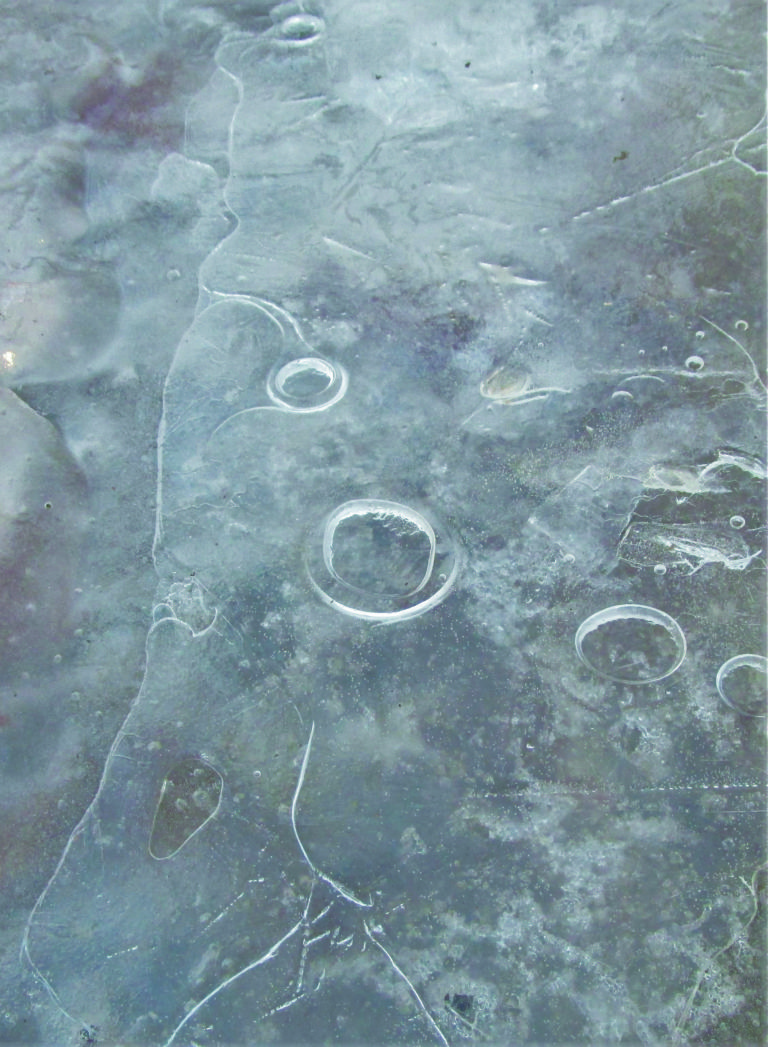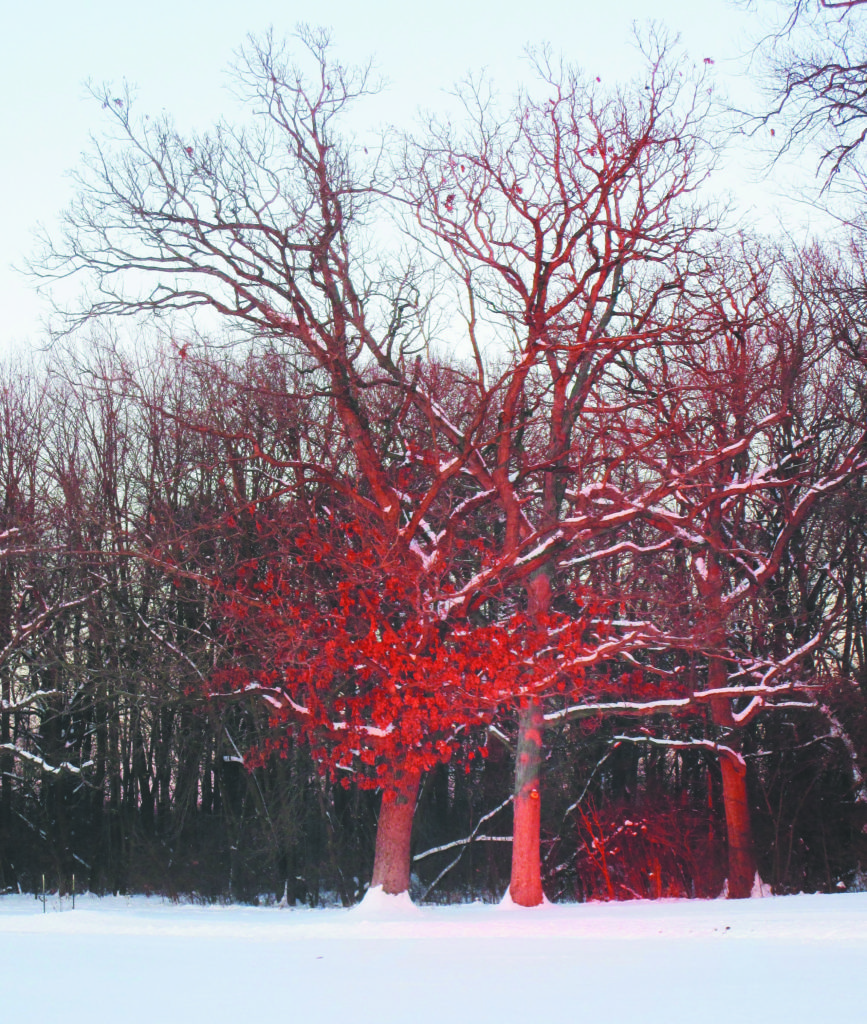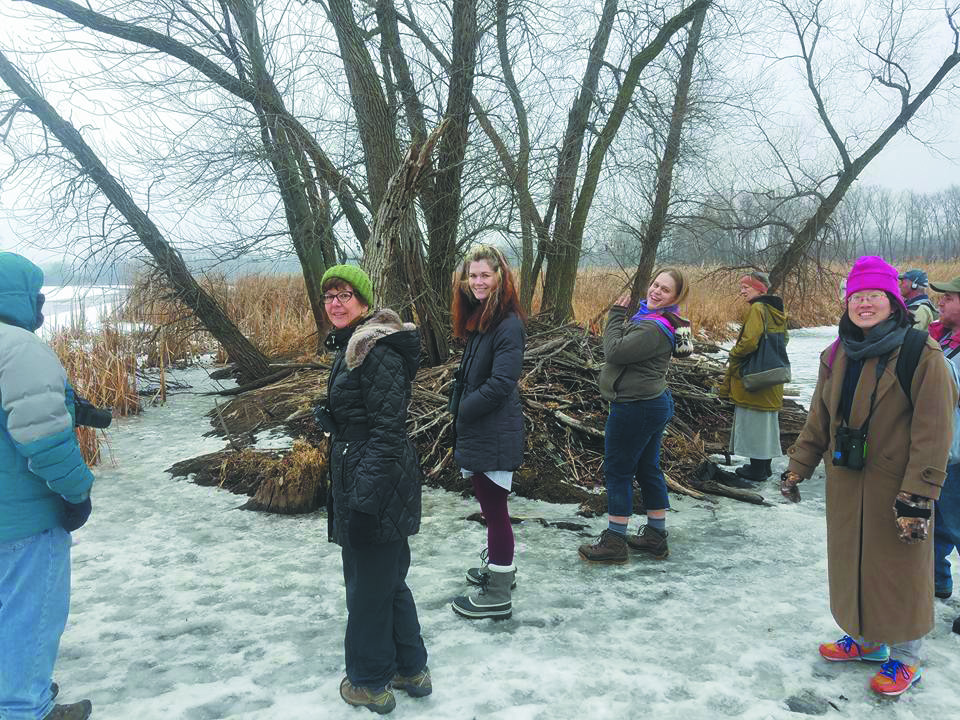
By Kathlean Wolf

Even in the depths of winter, there are rainbows. Not the full-color rainbows of a spring rain shower, but subtle explosions of color that take patience and curiosity to discover. On the coldest day of January, I wake to brilliant pink and orange spiral fans on my bedroom window, crystals of ice made during the night, one molecule at a time. Edged in gold, the tips of the fans terminate in hexagons, just like snowflakes.
Hours after the ice art has evaporated from my window, I step outside with my camera, wrapped in layers against the minus-14-degree air. I couldn’t say if I’m pitting myself against the cold or welcoming it. My secret fear is that climate change will take away this beloved season of snow and hibernation. I’d miss the animal tracks in the snow atop the frozen creek; the tapping of box-elder sap in February and March; the snap and boom of ice on the lake, crumpled edges of great ice slabs tilting the afternoon sun, and the scatterings of rainbow forming within their depths.
On the path through the woods, I spot leaves frozen beneath a scrim of ice; red oak, yellow maple, bright colors that seem out of place, the wild autumn wind suspended in time. Beneath the sleeping branches of oak, black cherry, hackberry and standing dead ash trees, blue-green lichens seem to glow on the dull tree trunks. Then, a brilliant rainbow bloom of Sterea ostrea mushrooms — flat fans of orange, brown, yellow, sienna and ochre.

Leaving the woods, I crunch through the stalks of last year’s cattails, across the pond, deep dark ice covered over by 8 inches of snow. Where the wind sweeps the ice clear, I can see lines of fracture: expanding ice pushing against itself as it thickens, snapping internally without weakening the whole. Beneath and within the ice are bubbles, trapped on their way to the surface. Oxygen from the algae, still photosynthesizing through winter? Methane from the depths of the anaerobic mud? Or the breath trails of muskrats, living safely beneath an icy lid on their watery world?
Crossing to the island, where few human feet tread for the rest of the year, I search for evidence of the river otter: broad-footed tracks, sledding runs, scat mounds. Nothing, all the living things have retreated into the warm spaces beneath the snow. Steam rises from the entrances of tiny rodent tunnels and frost daggers form around them, yet another miracle of ice art. No tracks mark the snow at the entrances; the mice are wiser than I, sleeping through this cold.
Circling the island, still searching for otter sign, sudden danger! The crunch of snow has given way to a slurping wet sound around my boots. Looking down with surprise, I realize I’ve entered the territory of a spring, seeping up from beneath the island. Fifty-five degrees, the water brings warmth up from deep underground, while the snow above insulates; caught between, the ice layer is rotten. If I fell through, 2 feet of ice-cold water would fill my boots, weigh down my pant layers, ensuring hypothermia or perhaps frostbite. Beautiful winter is a deadly beast. Retreating the way I came, I notice a slump in the snow marking the boundaries of safety. Overhead, blowing ice shards catch the sun to form a perfect, circular prism. A full-spectrum rainbow, at last; and I head for the safety of home.